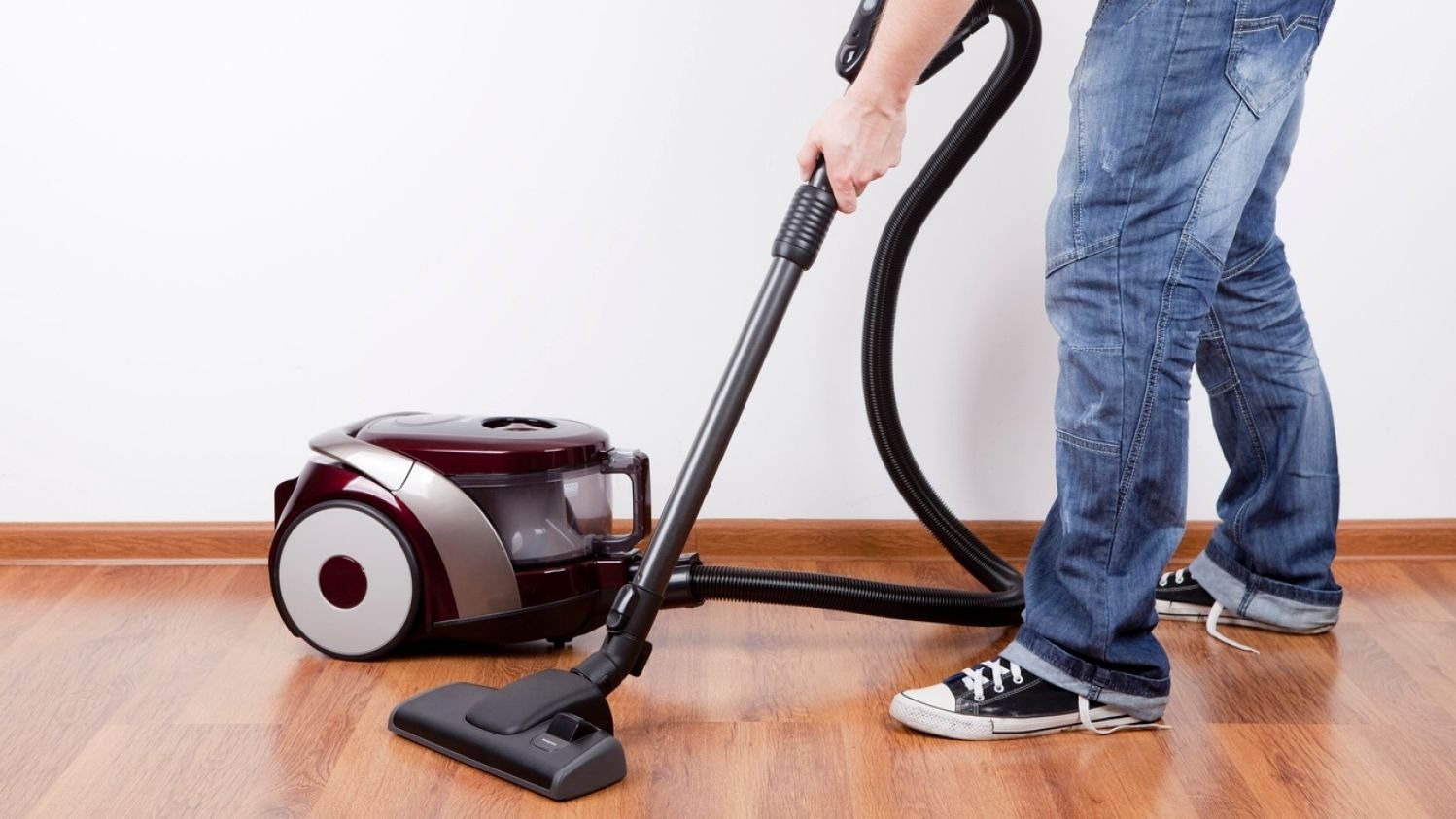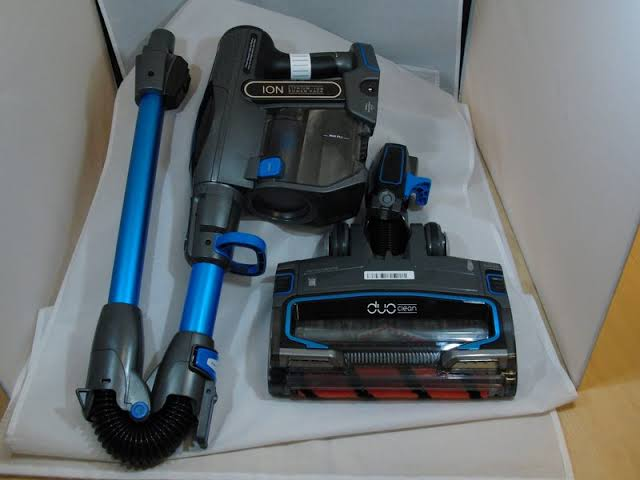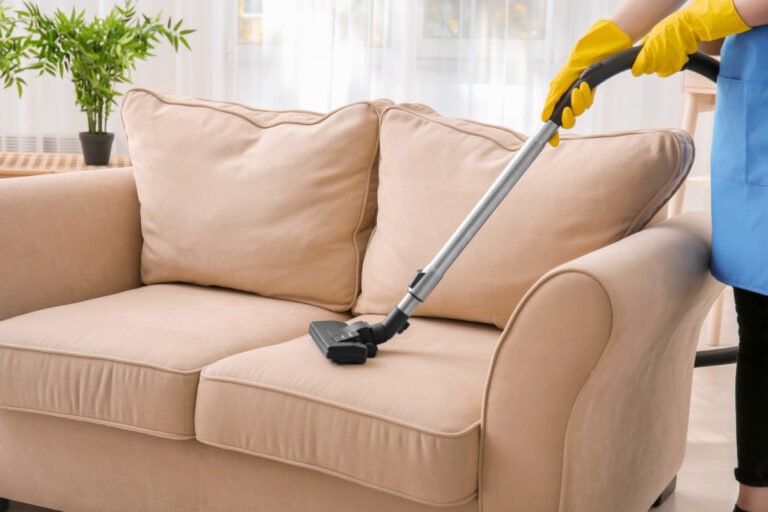Vacuum Cleaner Troubles: Why My Vacuum Cleaner is Not Picking Up?

The week’s dust and dirt in your house is ready to be cleaned on a beautiful Saturday morning. With your beloved vacuum cleaner, you can fight filth. Just as you turn on the machine, you notice something wrong. Despite the buzzing sound, dust particles are not vacuumed up. “Why my vacuum cleaner is not picking up?”
In contemporary houses, vacuum cleaners are essential. They keep our homes clean by removing dust, allergies, and microscopic pests. Vacuum cleaners have issues like other appliances. One of the most common vacuum cleaner problems we face is when it stops picking up dirt.
This is irritating, particularly when you have scheduled cleaning time but a struggling machine stops you. Do not despair! Knowing the causes and how to remedy them will get your vacuum cleaner working again quickly. Let us explore vacuum cleaners and their occasional suction issues.
Vacuum Cleaners Their Functions

At the heart of every vacuum cleaner, regardless of its type or model, are a few foundational components that work in harmony to achieve the primary purpose of sucking up dirt and debris. First and foremost is the motor, the powerhouse of the vacuum cleaner. This component converts electrical energy into mechanical energy, which in turn powers the fan attached to it.
Speaking of the fan, it’s the unsung hero of bagged vacuums. As the motor spins the fan, it creates an area of low pressure inside the vacuum cleaner. This phenomenon is what we commonly refer to as suction. The fan effectively draws in air from the outside along with the dirt and dust particles suspended in it.
Next, let’s talk about the bag or canister. This is where all the collected dirt and debris end up. Bags are typically found in older models and need to be replaced when full, while canisters, common in newer models, can be emptied and reused.
The filter, often overlooked but equally important, traps the smaller particles that manage to escape the bag or canister. It ensures that only clean, dust-free air is expelled back into your home. Filters come in various types, with HEPA filters being the gold standard for trapping microscopic allergens.
Lastly, we have the various attachments like the hose, wand, and cleaning heads. These are designed to reach different areas of your home, from high ceilings to tight corners, and cater to different surfaces, from carpets to hard floors. They make vacuum cleaners a versatile tool in our cleaning arsenal.
How a Vacuum Cleaner Works
Understanding how a vacuum cleaner works is a fascinating journey into the world of physics. At its core, a vacuum cleaner operates based on the principle of air pressure differential. When you switch on the vacuum cleaner, the motor starts running, setting the fan into motion. As the fan blades turn, they force air towards the exhaust port, creating a vacuum (an area of lower pressure) behind them.
In nature, air always moves from areas of high pressure to areas of low pressure. So, the ambient air in your room, which is at a higher pressure compared to the vacuum inside the cleaner, rushes in to fill the void. This rush of air is what we experience as suction.
As the air enters the vacuum cleaner, it brings along with it all the dust and dirt particles it encounters on its way. These particles are then trapped inside the bag or canister while the now-clean air is expelled back into the room through the exhaust filter.
This ingenious use of basic physics principles makes the vacuum cleaner an effective tool for maintaining cleanliness in our homes. Understanding how it works not only satisfies our curiosity but also helps us troubleshoot issues when they arise, ensuring we get the most out of our cleaning companion.
Why My Vacuum Cleaner is Not Picking Up?

Now that we have a basic understanding of how vacuum cleaners work, let’s dive into the reasons why your vacuum not picking up dirt as it should.
💢Clogged Filters
Imagine you’re running a marathon, but halfway through, someone hands you a heavy backpack to carry. It’s going to slow you down, right? This is exactly what happens when your vacuum cleaner’s filter gets clogged. The air flow gets restricted, severely affecting the suction button.
Filters, especially the fine ones like HEPA filters, trap microscopic dust particles that escape the dust container or canister. Over time, these particles build up and can block the filter completely. The result? Your vacuum cleaner’s performance takes a hit. It might still hum like it’s working, but the suction will be noticeably weaker. If left unchecked, a clogged filter can even strain the motor, leading to more serious problems down the line.
💢Full or Damaged Dust Bags
Remember the last time you overstuffed your suitcase and struggled to close it? That’s probably how your vacuum cleaner feels when its dust container or canister gets too full. A full bag leaves little space for air to circulate, which, in turn, reduces the vacuum’s suction button.
And it’s not just full bags that are problematic. Damaged bags or canisters can also affect your vacuum cleaner’s performance. A tear or crack can let dust particles escape back into the room, defeating the whole purpose of vacuuming. It can also allow larger debris to reach and potentially damage other parts of the vacuum cleaner.
💢Blocked Hoses
The hose of your vacuum cleaner is like a highway for dust and debris. But what happens when there’s a traffic jam? The journey from your floor to the dust container or canister gets disrupted. That’s precisely what a clogged hose does to your vacuum cleaner.
Blockages often occur when large or awkwardly shaped items get sucked up. When the pathway is blocked, the air flow is restricted, leading to reduced suction. In some cases, you might even hear a whistling sound as the vacuum cleaner struggles to draw in air.
💢Broken or Worn-out Belts
Imagine trying to pedal a bike with a loose or broken chain. No matter how hard you pedal, the bike won’t move forward. This is similar to what happens when the belt of your vacuum cleaner is broken or worn out.
The belt in a vacuum cleaner is akin to a bike’s chain—it connects the motor to the roller brush, causing it to spin. A properly functioning brush roll agitates the carpet fibers, loosening the dirt and making it easier for the vacuum to suck it up. So, if the belt is broken or worn, the brush roll won’t spin effectively, leading to a decrease in the vacuum’s cleaning ability.
Belts are typically made of rubber and can wear out over time, especially under heavy use. They can also break if the vacuum cleaner sucks up a large object that jams the brush roll. Regularly inspecting the belt and replacing it when necessary can ensure your vacuum cleaner continues to clean effectively.
💢Faulty Motor
In the grand orchestra that is your vacuum cleaner, consider the motor as the conductor. It powers the fan, which creates the suction, and drives the belt, which spins the brush roll. So, if the motor is faulty, your vacuum cleaner’s performance will suffer significantly.
A faulty motor may not create enough suction, or worse, it may not run at all. Signs of a faulty motor include unusual noises, excessive heat, or a burnt smell while running the vacuum cleaner. In some cases, the vacuum might repeatedly turn off after a short period of use.
Fixing a faulty motor is not typically a DIY job, as it involves dealing with electrical components. If you suspect your vacuum cleaner’s motor is faulty, it’s best to consult a professional or contact the manufacturer’s customer service.
Regular maintenance, such as cleaning the filters and avoiding blockages, can help prolong the motor’s life and keep your vacuum cleaner running smoothly.
Checking Your Vacuum Cleaner

Embarking on a mission to check your vacuum cleaner might seem daunting, but it doesn’t have to be. Think of it as giving your trusty cleaning companion a well-deserved spa day. Let’s walk through each part and what to look for.
Starting with the bag or canister, ensure it’s not overly full or damaged. Regularly empty the bag or canister when it’s about two-thirds full. Check for rips, tears, or cracks that could let dust escape or harm other parts of the vacuum.
Next, examine the filters. They should be free of excessive dust build-up that could clog them. If they look dirty, give them a good clean or replace them if necessary. Remember, a clean filter is essential for maintaining strong suction and protecting the motor.
Moving on to the hose, check for blockages by holding it up to the light. If you can’t see light at the end, there’s likely a blockage. Also, inspect the hose for any cracks or holes that could reduce suction.
The belt is another crucial component to inspect. Look for signs of wear like cracks or stretching. If the belt seems loose or worn out, it’s time for a replacement.
Finally, listen to your vacuum cleaner’s motor. Unusual noises, excessive heat, or a burnt smell could indicate a problem. If the vacuum keeps turning itself off, this could also be a sign of a faulty motor.
‼Signs that Indicate a Specific Problem
Weak or No Suction: This could be due to a full or damaged bag/canister, a clogged filter, a blocked vacuum hose, or a faulty motor.
Brush Roll Not Spinning: The likely culprit is a broken or worn-out belt. However, it could also be due to something jamming the brush roll.
Unusual Noises or Smells: These are often signs of a faulty motor. However, a whistling sound could also indicate a clogged hose.
Vacuum Cleaner Turns Off Randomly: This is often a sign of an overheating motor, which could be due to a clogged filter or a full bag/canister.
Dust Escaping from the Vacuum: This could be due to a damaged bag/canister or a clogged filter.
Fixing Your Vacuum Cleaner
If your vacuum cleaner is not picking up as it should, don’t panic. The good news is that most of the common issues can be easily fixed with some simple troubleshooting.
👉🏻Step-by-Step Guide on How to Fix Common Issues
Weak or No Suction: Start by emptying your vacuum bag or canister, as it might be full. If the problem persists, make sure to inspect the filters. They could be clogged and may need a thorough cleaning or replacement. Still no luck? Take a look at the hose for any potential blockages or tears.
Brush Roll Not Spinning: Begin with unplugging the vacuum cleaner. Flip it over to get a good view of the brush roll. Check for any debris that could be causing a jam. If the brush roll seems clear but isn’t spinning, it’s probably an issue with the belt – you might need to replace it.
Unusual Noises or Smells: This could be a sign of a faulty motor. However, if you’re hearing a whistling sound, there could be a blockage in the hose. Clear out any obstructions and see if the noise persists.
Vacuum Cleaner Turns Off Without Warning: This could be an overheating issue caused by a clogged filter or a full bag/canister. Try emptying or cleaning the bag/canister and the filter. If the vacuum continues to shut off, it might be time to seek professional help.
Dust Escaping from the Vacuum: Inspect the bag or canister for any damage and replace if required. It’s also worth checking the filters – they might be due for a cleaning or replacement.
👉🏻When to Seek Professional Help
There’s a certain satisfaction that comes with fixing things yourself, but it’s crucial to know when a problem is beyond your expertise. Motor-related issues, for instance, are best left to professionals due to the potential risk of electrical shock or further damage.
If you’ve tried all the troubleshooting steps and your vacuum cleaner is still not functioning properly, it’s time to call in the cavalry. Also, remember that if your vacuum cleaner is under warranty, attempting to repair it yourself could void the warranty.
In such cases, it’s best to reach out to the manufacturer’s customer service for guidance.
Maintaining Your Vacuum Cleaner

✔Regular Emptying: Make it a habit to empty the bag or canister once it’s about two-thirds full. This simple routine prevents overloading and maintains optimal suction power.
✔Filter Care: Clean your filters regularly, as per the manufacturer’s guidelines. A clogged filter not only reduces suction but can also cause the motor to overheat. Remember, some filters are washable, while others need to be replaced.
✔Hose Inspection: Regularly inspect the hose for blockages or tears. A simple way to check for blockages is by holding the hose up to the light. If you can’t see light through it, there’s probably a blockage.
✔Belt and Brush Roll Check: Every few months, take a peek at the brush roll and belt. Clear any tangled hair or debris from the brush roll and replace the belt if it looks worn out or loose.
✔General Cleaning: Occasionally, give your vacuum cleaner a general clean. Wipe the exterior with a damp cloth and clean the dust compartment. This not only keeps your vacuum looking good but also prevents dust build-up in crevices.
Importance of Using Genuine Spare Parts
In the quest for maintaining your vacuum cleaner, you might be tempted to opt for cheaper, non-genuine spare parts. While these might save you a few bucks initially, they could end up costing you more in the long run.
Genuine spare parts are designed to fit your specific model perfectly and function optimally. They maintain the integrity of your vacuum cleaner and ensure it performs at its best. On the other hand, non-genuine parts might not fit properly, leading to reduced performance or even damage to other components.
Furthermore, using non-genuine parts could void your warranty, leaving you to foot the bill for any future repairs. So, while it might seem like an unnecessary expense, investing in genuine spare parts is actually a smart move to safeguard the longevity and efficiency of your vacuum cleaner. Remember, quality begets quality.
Frequently Asked Questions
Q: Why is my vacuum cleaner not picking up even though it has suction?
A: If your vacuum cleaner has suction but is not picking up dirt, the issue could be with the brush roll or the belt. The brush roll could be jammed with hair or debris, preventing it from spinning and picking up dirt. Similarly, a worn-out or broken belt could also stop the brush roll from spinning. Start by checking the brush roll and the belt for any issues. If the problem persists, you might want to consult a professional.
Q: How often should I change my vacuum cleaner’s filter?
A: The frequency of filter changes depends on how often and heavily you use your vacuum cleaner. However, a common rule of thumb is to replace your filter every six months. If you have allergies or pets, you might need to change it more frequently. Always refer to your vacuum cleaner’s manual for specific instructions related to your model. Some filters are washable, which means you can clean and reuse them a few times before needing to replace them. Remember, a clean filter ensures optimal suction power and prolongs the lifespan of your vacuum cleaner.
Q: Does overfilling the dust container reduce the vacuum cleaner’s efficiency?
A: Yes, overfilling the dust container can indeed reduce your vacuum cleaner’s efficiency. When the bag becomes too full, the vacuum has to work harder to suck in air, which can lead to reduced suction power. It can also cause dust and debris to block the air flow, further diminishing the vacuum’s effectiveness. That’s why it’s recommended to empty the bag or canister once it’s about two-thirds full. This helps maintain optimal suction power and prolongs the lifespan of your vacuum cleaner.
Conclusion
From understanding how to fix common issues to recognizing when it’s time to seek professional help, we’ve armed ourselves with the knowledge to tackle vacuum cleaner woes head-on. We’ve also underscored the importance of routine maintenance and using genuine spare parts – two crucial aspects that can significantly enhance your vacuum cleaner’s performance and lifespan.
Now, it’s your turn to share your experiences. Have you encountered any unique vacuum cleaner issues? Do you have any maintenance tips that weren’t covered here? Leave a comment below and enrich our discussion with your insights. After all, learning is an ongoing process and your experiences might just be the solution someone else is looking for.




![Best Dyson Cordless Vacuums [Buyers’ Guide]](https://relentlesshome.com/wp-content/uploads/2020/02/dyson-vacuum-cleaners-768x512.jpg)

